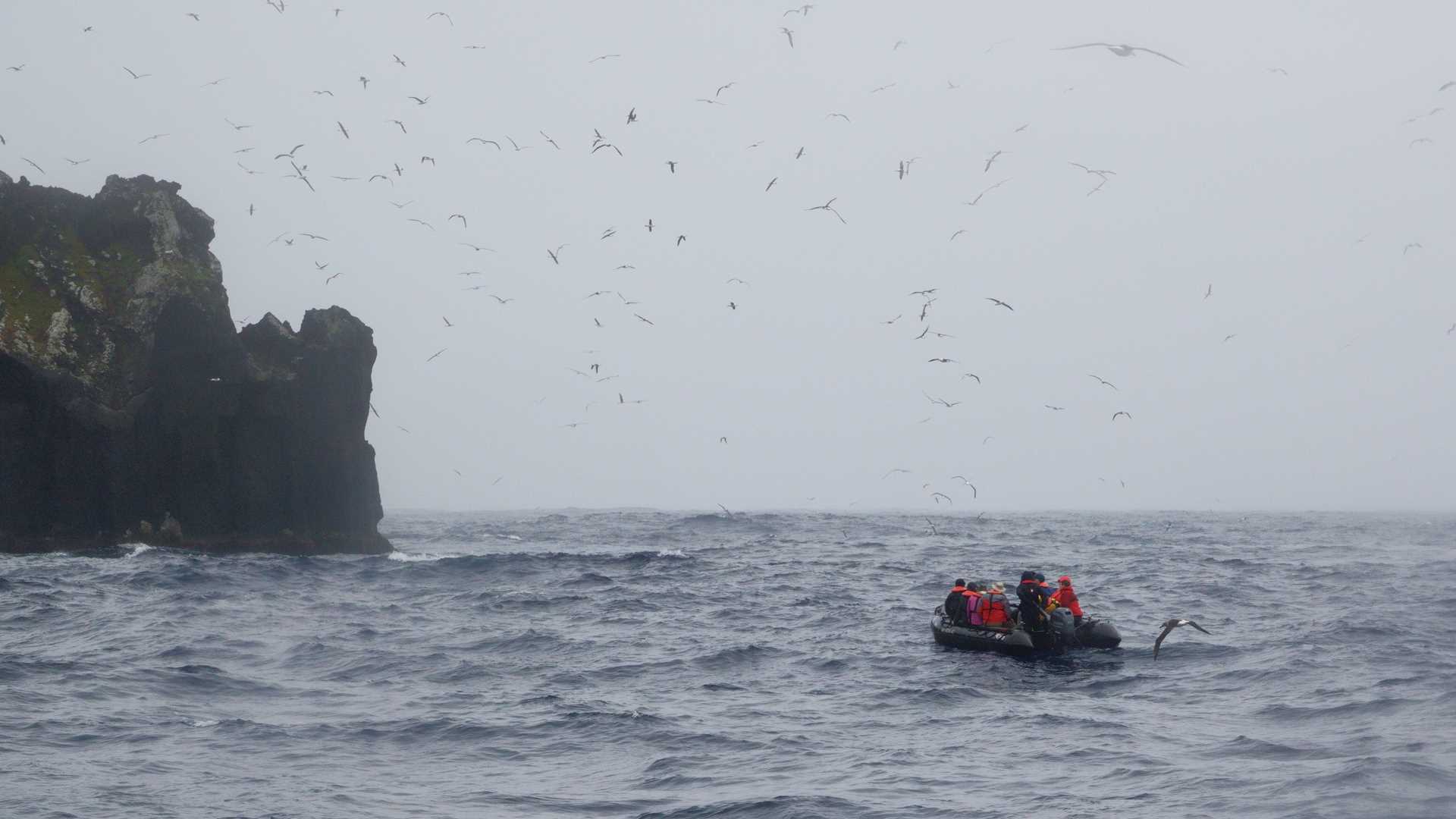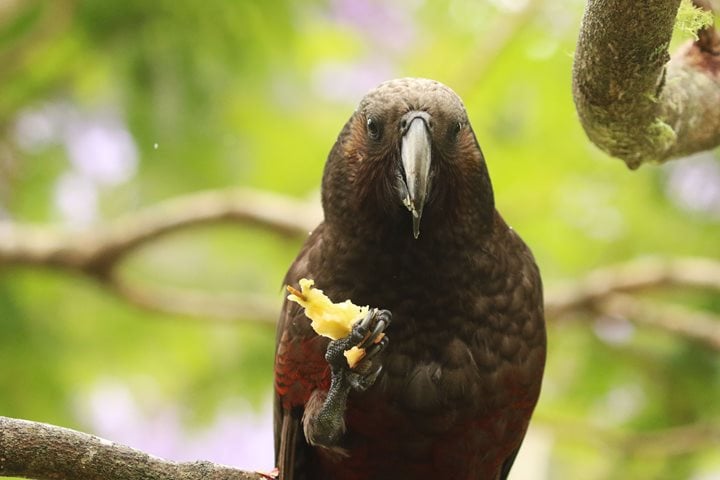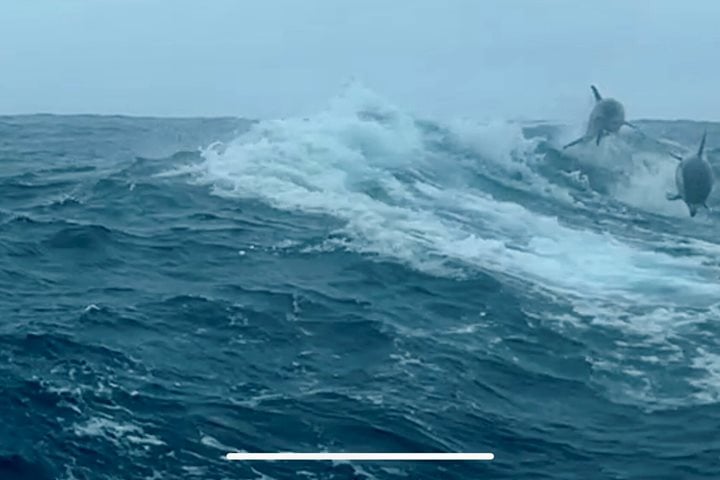Campbell Island is an extinct volcano with terraces and cliff faces comprised of basalt from past volcanic eruptions dating back over 170 million years. The island is home to several endemic species of birds, including two albatross species that nest almost exclusively on the island. The southern royal albatross, with a 3.5-meter wingspan, and the Campbell albatross nest solely here on Campbell. Though smaller than its larger cousin, the royal albatross, the Campbell albatross is no less magnificent. It is always a powerful experience to observe these colonies nesting in very dense groups along the rugged coastline. This morning was no exception.
As we set out by Zodiac to get a more intimate look at this wild scenery, we were immediately surrounded by soaring Campbell albatrosses making their way to and from the nesting cliffs of North Cape. Rafts of these majestic birds settled upon the water, preening their feathers in preparation for their foraging forays far out to sea. Along the cliff faces, swarms of birds filled the air. As we drew nearer to the shore, the incredible density of the nesting albatrosses became apparent. Along with teeming numbers of Campbell albatrosses, we observed Campbell Island shags, Antarctic terns, giant petrels, prions, and light-mantled albatrosses. The stunning scenery made for an exceptional morning.
Keeping with the theme of the day, we spent our afternoon at Campbell Island trekking to the lofty nesting grounds of the southern royal albatross. Along with their close relative, the wandering albatross, these birds boast the longest wingspan of any extant flying bird at an average of 3.5 meters. Because of their massive size and relatively heavy bodies, these birds require far more space to nest and significantly more time as well. At an average weight of 14 to 20 pounds, they need an average nesting territory of nearly three hectares (seven acres). Like all albatrosses, these birds must nest where high winds are standard. Elevation is essential for them to be able to take to the air and put their exquisitely evolved soaring and gliding into practice. We hiked for five kilometers along a gradually ascending, narrow boardwalk path, passing through the dense Dracophyllum forest, and ultimately climbing up to the more open and windswept alpine meadow. In this habitat, albatrosses make their nests. Nearly the entire population (over 90%) of southern royal albatrosses nests here on Campbell Island. Just over 8,000 pairs call Campbell Island home for the long 14-month nesting period, making the opportunity to get a glimpse of these animals a truly unique experience. The weather was less than ideal for some people, but it was perfectly suitable for the albatrosses we were here to visit. Embracing the elements was the order of the day.







